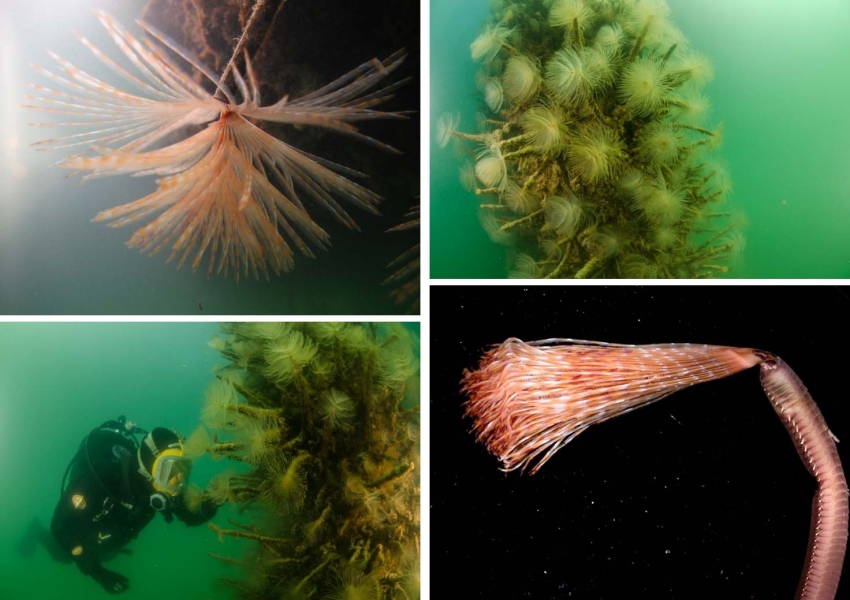The Mediterranean fanworm Sabella spallanzanii is a spectacularly large worm with a characteristic circular whirl of filaments. Its tubes can be over 40 cm long and the worm looks like a graceful, golden flower in the water.
This introduced species recently spread to New Zealand, probably hitchhiking on ships from Australia. The first worm was detected in 2008 in Lyttelton, and populations are increasing, particularly around Auckland, this species can be a major fouling problem on structures and boat hulls, and a competitor to native fauna. Sabella spallanzanii is a notifiable organism under the New Zealand Biosecurity Act. Culling by divers as part of a Government response to this pest largely eliminated it in Lyttelton (Read et al. 2011, 3), but it was subsequently found in the Auckland region and the Ministry for Primary Industries (MPI) considered that eradication from New Zealand was not feasible. MPI, NIWA’s biosecurity surveillance team and Marine Invasives Taxonomic Service (MITS, 4) have monitored this species since its arrival and continue to work with local authorities to eliminate small populations when they appear in locations where Sabella has not yet established (e.g., Coromandel, Tauranga, Nelson and Picton). MITS holds the first worm found (photo) and most of the rest collected since, and probably has the largest collection of Sabella spallanzanii in the world – over 640 jars and vials containing specimens.
Further information:
- Arrival of the alien fanworm Sabella spallanzanii (Gmelin, 1791) (Polychaeta: Sabellidae) in two New Zealand harbours
- World Register of Marine Species - Sabella spallanzanii (Gmelin, 1791)
- Ministry for Primary Industries - New Zealand Marine Pest Guide

